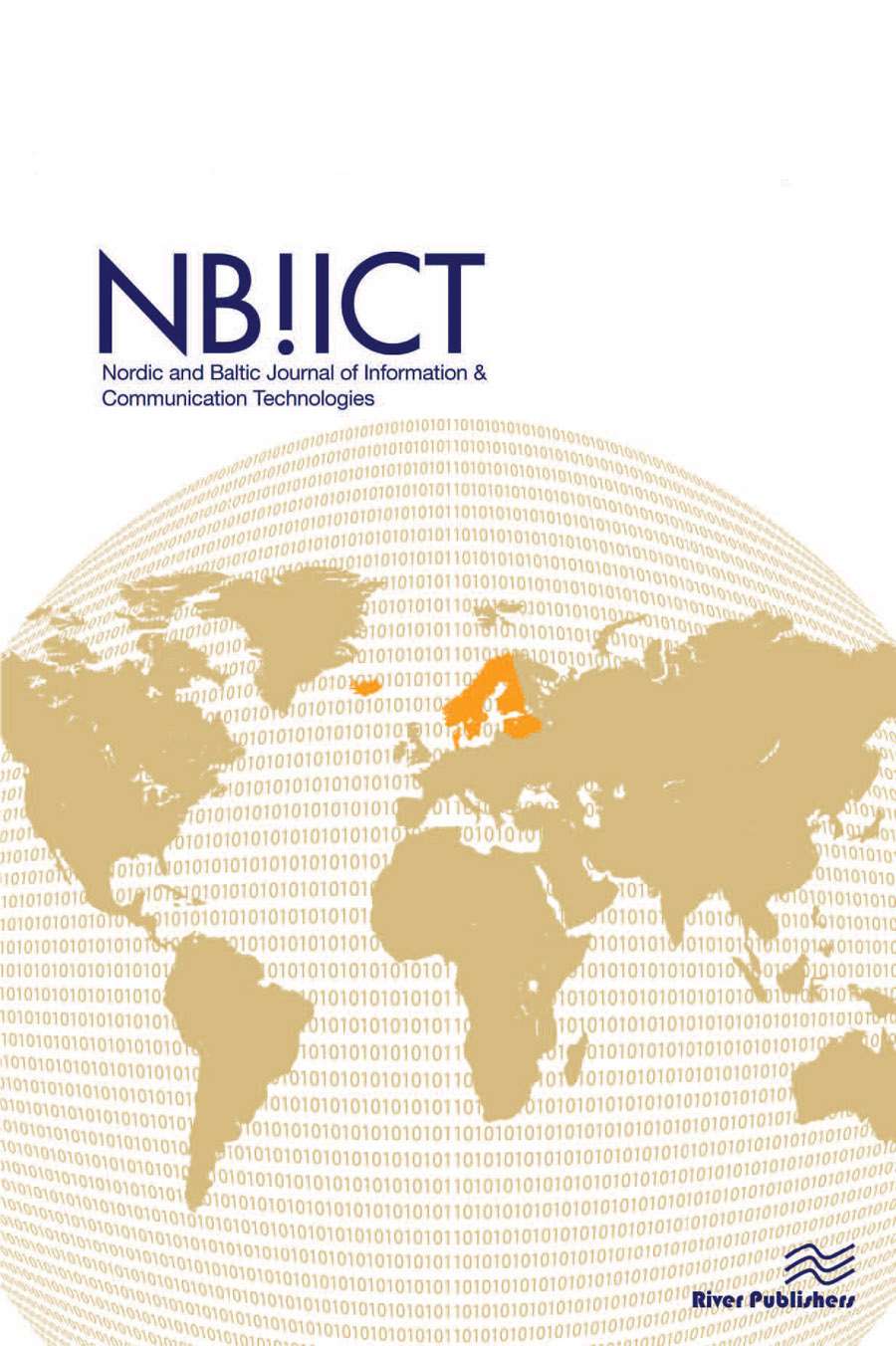Blockchains and Transaction Costs
DOI:
https://doi.org/10.13052/nbjict1902-097X.2020.002Keywords:
Blockchain, transaction costs, contractingAbstract
This paper examines current business applications of blockchain technology and discusses blockchain implications for transaction costs. Blockchains are a relatively new set of technologies that can be used for various business purposes, primarily activities related to contracting. Transaction costs comprise the operational costs of contacting (searching and communicating) as well as the costs of contracting (writing and enforcing contracts), and blockchains can be used to lower, first and foremost, the costs of writing and enforcing contracts. Other technology applications that have been investigated to a larger extent, such as multi-sided platforms, primarily help in lowering the costs of searching and communicating, while blockchains can contribute to lowering the costs of contracting.
Downloads
References
Bartoletti, M., and Pompianu, L. (2017). An Empirical Analysis of Smart Contracts: Platforms, Applications, and Design Patterns. In: Brenner M. et al. (eds.) Financial Cryptography and Data Security. Lecture Notes in Computer Science, Vol. 10323. Springer.
Bisade, A. (2018, November 1). Consortium Blockchain Explained. Retrieved from https://www.mycryptopedia.com/consortium-blockchain-explained/
BiTA. (2018). Blockchain in Transport Alliance. Retrieved from https://bita.studio/
Bresnahan, T., and Trajtenberg, M. (1995). General purpose technologies: ‘Engines of growth’. Journal of Economics, 65, pp. 83–108.
Catalini, and Gans. (2018). Some simple economics of the blockchain. NBER Working Paper Series, Working Paper 22952, 21.
Catalini, C. (2017). How Blockchain Technology Will Impact the Digital Economy. Retrieved from University of Oxford: https://www.law.ox.ac.uk/business-law-blog/blog/2017/04/how-blockchain-technology-will-impact-digital-economy
Christensen, C. (1997). The innovator’s dilemma: When new technologies cause great firms to fail. Harvard Business School Press.
ChromaWay. (2018). Platform. Retrieved from https://chromaway.com/platform/
ChromaWay. (2018). Postchain Blueprint an Introduction. Retrieved from https://chromaway.com/papers/postchain-blueprint.pdf
Coase, R. (1937). The nature of the firm. Economica, Vol. 4, No. 16, 386–405.
Davidson, S., De Filippi, P., and Potts, J. (2016). Economics of blockchain, Public Choice Conference. May 2016, Fort Lauderdale, United States. ff10.2139/ssrn.2744751ff.ffhal-01382002f
Deloitte. (2017). Blockchain in Commercial Real Estate. The Future is Here! Retrieved from file:///C:/Paper_2018_Block_Chain/us-fsi-rec-blockchain-in-commercial-real-estate.pdf
Destefanis, G., Bracciali, A., and Ma, M. (2018). Smart Contracts Vulnerabilities: A Call for Blockchain Software Engineering? Campobasso, Italy: IEEE 19 IWBOSE 2018.
Eichkorn, D. (2018). All About the Blockchain: The Next Generation of Cybersecurity. Retrieved from https://www.gflesch.com/blog/all-about-blockchain
EleaLabs. (2018). Shaping the Future of Real Estate with Cryptofinance Technology. Retrieved from https://www.elea.io/
EosProject. (2018). FreeSimple. Retrieved from https://eosprojects.org/projects/p/feesimple/
Future, K. (2017). The Land Registry in the Blockchain – Testbed. Retrieved from file:///C:/Paper_2018_Block_Chain/Blockchain_Landregistry_Report_2017.pdf
Henten, A., and Windekilde, I. (2016). Transaction costs and the sharing economy. Journal Info (Bingley).
Iansiti, M., and Lakhani, K. R. (2017). The truth about blockchain. Harvard Business Review, January–February 2017, pp. 3–11.
IBM. (2018). Blockchain for Supply Chain. Retrieved from https://www.ibm.com/blockchain/industries/supply-chain{#}1216816
IBM. (2018). Blockchain in Food Safety. Retrieved from https://www.ibm.com/blogs/blockchain/category/blockchain-in-food-safety/
Jensen, M., and Meckling, W. (1976). The theory of the firm: Managerial behavior, agency costs and ownership structure. Journal of Financial Economics, No. 3, pp. 305–360.
Lahoti, N. (2018). How Blockchain is Transforming Logistics and Supply Chain. Retrieved from https://www.linkedin.com/pulse/how-blockchain-transforming-logistics-supply-chain-nitin-lahoti/
Media, C. (2018). Blockchain-Based Lending. Retrieved from https://media.consensys.net/blockchain-based-lending-1eee5edabe8a
MEDICI. (2018). Know More About Blockchain: Overview, Technology, Application Areas and Use Cases. Retrieved from https://gomedici.com/an-overview-of-blockchain-technology/
NullTX. (2018). How to Use Smart Contracts in Banking? Retrieved from https://nulltx.com/how-to-use-smart-contracts-in-banking/
Rooney, H. (2017). Is Internal Audit Ready for Blockchain? Retrieved from Technology Innovation Management Review: https://www.researchgate.net/publication/320680552_QA_Is_Internal_Audit_Ready_for_Blockchain
Suisse, C. (2018). Credit Suisse and ING Execute First Live Transaction Using HQLAx Securities Lending App On R3’s Corda Blockchain Platform. Retrieved from https://www.credit-suisse.com/corporate/en/articles/media-releases/cs-and-ing-execute-first-live-transaction-201803.html
Szabo, N. (1994). Smart Contracts. Retrieved from http://www.fon.hum.uva.nl/rob/Courses/InformationInSpeech/CDROM/Literature/LOTwinterschool2006/szabo.best.vwh.net/smart.contracts.html
Szabo, N. (1996). Smart Contracts: Building Blocks for Digital Markets. Retrieved from http://www.fon.hum.uva.nl/rob/Courses/InformationInSpeech/CDROM/Literature/LOTwinterschool2006/szabo.best.vwh.net/smart_contracts_2.html
Szabo, N. (1997). Smart Contracts: Formalizing and Securing Relationships on Public Networks. First Monday, Volume 2, Number 9, 1 September.
Tapscott, D., and Tapscott, A. (2017). How blockchain will change organizations. MITSloan Management Review, Vol. 58, No. 2, pp. 10–13.
Tradelens. (2018). The Power of the Ecosystem. Retrieved from https://www.tradelens.com/ecosystem/
Velox.RE. (2018). https://www.velox.re/. Retrieved from https://www.velox.re/
Voshmgir, S. (2017). Disrupting governance with blockchains and smart contracts. Wiley, Strategic Change, John Wiley and Sons, Ltd., 26(5), 499–509.
Walmart. (2018). Food Traceability Initiative – Fresh Leafy Greens. Retrieved from https://corporate.walmart.com/media-library/document/blockchain-supplier-letter-september-2018/_proxyDocument?id=00000166-088d-dc77-a7ff-4dff689f0001
Wiliamson, O. (1975). Markets and hierarchies: Analysis and antitrust implications.
Wiliamson, O. (1979). Transaction-cost economics: The governance of contractual relations. pp. 233–261.
Wiliamson, O. (1984). The economics of governance: Framework and implications. pp. 195–223.
World Bank. (2018). World Bank Mandates Commonwealth Bank of Australia for World’s First Blockchain Bond. Retrieved from https://www.worldbank.org/en/news/press-release/2018/08/09/world-bank-mandates-commonwealth-bank-of-australia-for-worlds-first-blockchain-bond
Zheng, Z., and Xie, S. (2017). An Overview of Blockchain Technology: Architecture, Consensus, and Future Trends. 6th International Congress on Big Data. IEEE.


